As Mapping the City opens at Somerset House’s new wing, we caught up with curators Approved by Pablo to talk street art, site-specificity and ways of engaging with the rapidly changing urban environment.
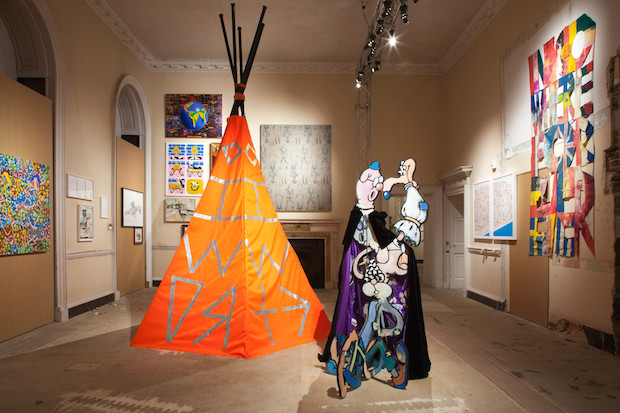
When Grafik went to Somerset House to meet Rafael Schacter, one of the three curators behind Approved by Pablo, the team was busy putting the final touches on this landmark street art show. It’s the first time that the west wing of Somerset House has been used as a gallery space, and its high ceilings, ornate cornicing and shabby walls have been left in a state of pleasing deconstruction, as the space transitions from the former home of the Inland Revenue to a new, renovated contemporary art space.
In terms of a backdrop for Mapping the City, an exhibition of fifty works from leading street and graffiti artists, the ramshackle space could not be better. In many ways its transitional state and the visible palimpsest of previous inhabitants is a metaphor for how these artists engage with urban environments, reclaiming spaces (in this case from HRMC) by adding their own mark to a multi-layered architectural canvas. It’s poignant too that, as central London surges towards commercialised homogeny, Somerset House has opened up a new space where artists that operate somewhat outside of the conventional art market can exhibit their work.
In addition, Mapping the City boasts a varied and international section of artworks that challenge preconceptions of what an exhibition of street artist might look like. There’s plenty of paper works, such as Will Sweeney and Gold Peg’s fantastical distortions of London, Ox’s reconfigurations of street signs (a kind of legal graffiti that similarly disrupts the environment) into an almost Arts and Crafts-style pattern, Shantell Martin’s data-led maps of cycle crash points in various US cities (a mess of lines that themselves conjure up the scene of a crash) and a portrait of a woman towering above Bangkok’s vernacular architecture by Swoon, perhaps the most famous artist in the show, but there’s sculpture and performance too.
Martin Tibabuzo made a paper globe entirely from memory, after being prescribed a course of memory exercises as his recall was starting to fail. New York-based Momo exhibits a map and video of his attempt to create the largest ‘one-liner’ tag in the world using a device attached to his bicycle to drip his name in block-long letters across the entire width of Manhattan. 3TT Man has formed a pyramid of coloured concrete sandcastle, a comment on how colonial cultures always build on top of pre-existing structures rather than combining inspired by a recent trip to Mexico City. Most excitingly collective Cult of RAMM:ΣLL:ZΣΣ talk about gentrification through chaotic yet conceptually strong rituals that include dance, ‘break-spraying’ and music, inspired by Afrofuturist artist Rammellzee.
We caught up with curator Rafael Schacter to talk street art, site-specificity and ways of engaging with the rapidly changing urban environment.
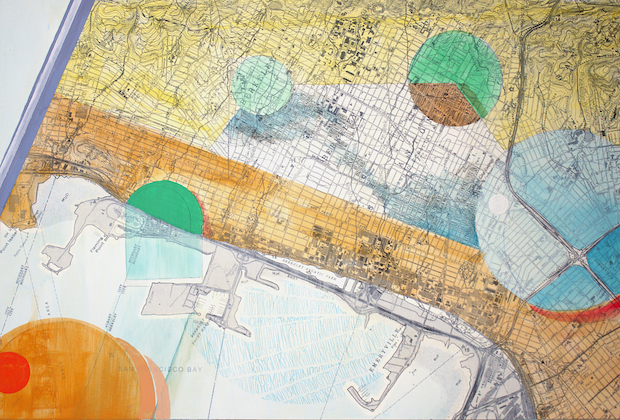
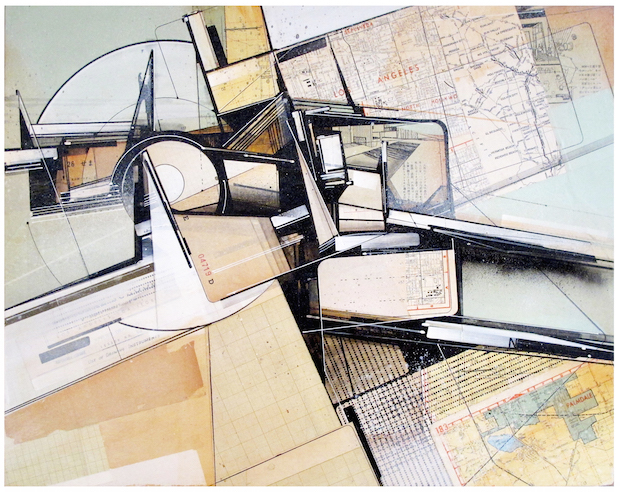
Tell me little bit about the thinking behind the show.
Rafael Schacter: Mapping the City is not just a collection of work by street artists but an exhibition about what street and graffiti are. It discusses the city and site-specificity, which to us is what graffiti and street art really about. The show looks at how artists respond and react to the city.
How does it work transferring those ideas to a gallery space, where things aren't specific to the location that inspired them?
RS: It’s similar question to graffiti and street art ever moving inside. For me, graffiti and street art that replicates itself in the gallery makes absolutely no sense. It does't work. So what we've said to the artist is, instead of producing graffiti or street art, produce an object or something artifactual that explains how you understand the city. So the show isn’t pieces of graffiti and street art but instead, graffiti and street artist's interpretations of what the city is about.
Did you give the artists a brief?
RS: Ninety per cent of the works we commissioned ourselves. We gave the artists a three-word brief: 'Map your space’. We didn't give them any restrictions so we've got a wide variety of objects from tee-pees to videos and sculptures, to prints, canvases and paper works. All of them explore how artists understand the city as a place where they produce work on a daily basis. The concept is that these people understand the street in a very different way to how I understand the street. They see the dustbin as a ladder, some wood as something to make sculpture out of – the way they see the city is as a space of pure creativity. It’s very different to what the city has become, this place of movement from A to B, and a space of commerciality rather than a space of creativity. Our real desire is that people will come here and see all these different ways of interpreting space and leave here with a new way of looking at their own environment.
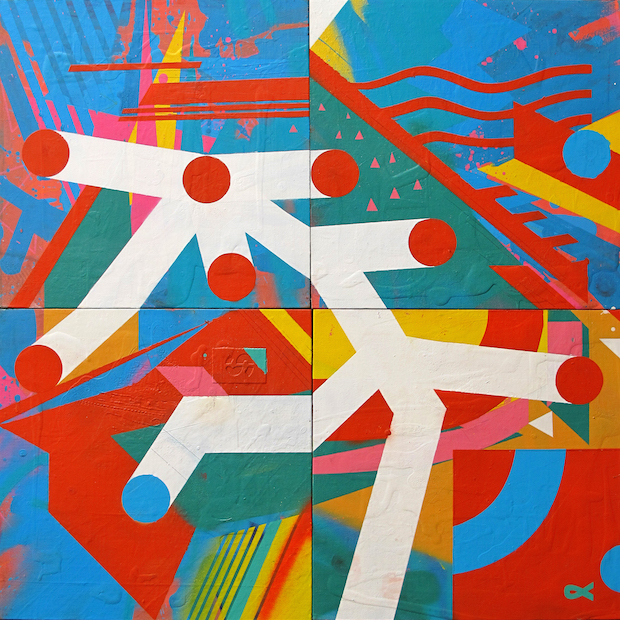
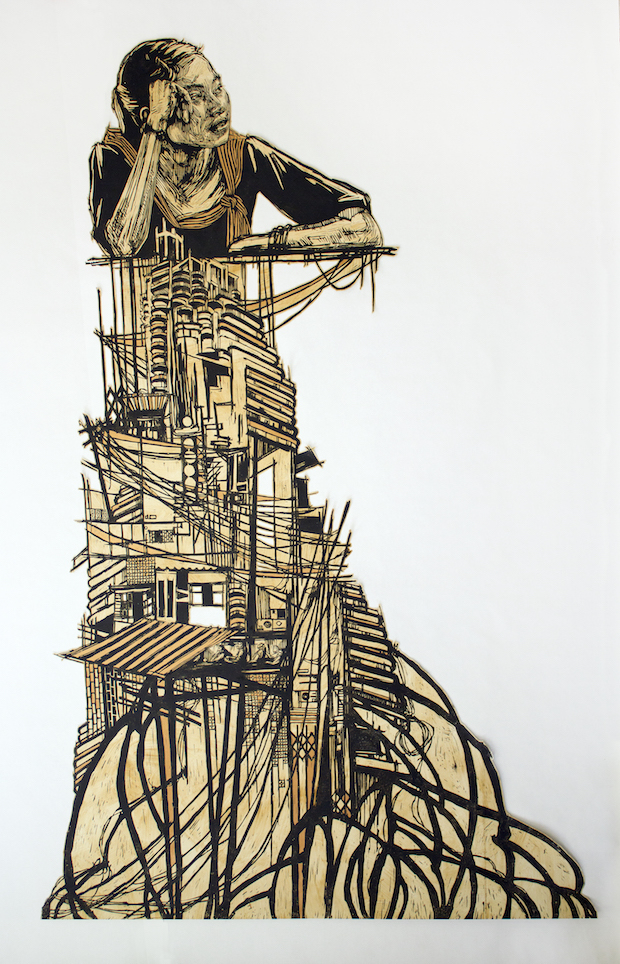
The show has the backdrop of a London that is changing very rapidly. The centre of the city is becoming increasingly commercial, and artists are moving further and further out. Is that something that has been on your mind?
RS: Definitely. Here at A(by)P we're really excited about the new wing of Somerset House. To bring an arts hub, which is accessible for young artists, back into central London is invaluable. I'm sick of being pushed out to Hackney Wick and even further. Hackney Wick is great, but the problem in producing an exhibition there is that you're only going to get a certain section of society seeing it.
Tell me about a piece that has surprised you or stretched how you personally view the city.
RS: All of the fifty artists that we’re exhibiting are ones that I love, but there are two pieces about invisibility by Russell Maurice and Petro that are both about invisibility. They’re brothers in a way, as they’re both about ways of being in the city and producing things that you're not supposed to produce. Russell has produced a nighttime cloak of invisibility, with a map of the city in the inside of the cloak in the same way that WW2 pilots would have maps sewn inside their jackets so that if they crashed they'd be able to see their way. Petro has discussed daytime invisibility. The piece is call The High Invisible, and explores the idea that Hi Vis vests give you invisibility in the day. Lots of graffiti artists use them because people don't notice you.
How do these two pieces relate to the work that the two artists carry out in the built environment?
RS: Like a lot of the other artists in this show, their art practice is often related to or about their graffiti practice but it's not that itself. Russell's crazy characters don't often feature in his graffiti work but they do feature in his studio work. Some of the markings on The High Invisible are a bit like tags. What we’re fascinated by is how these artists have gone through years of working on the street (and they still do) but they've moved on to something else. How they’ve evolved is what I'm really interested in.
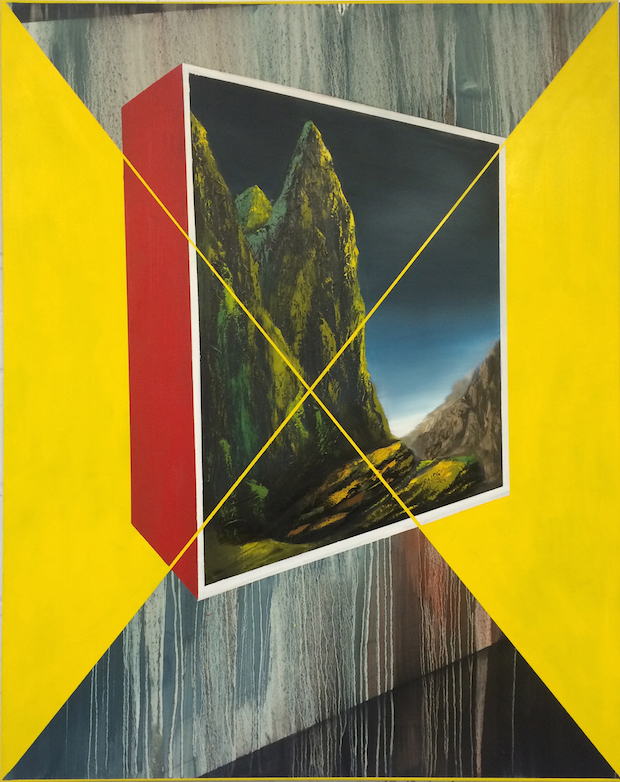
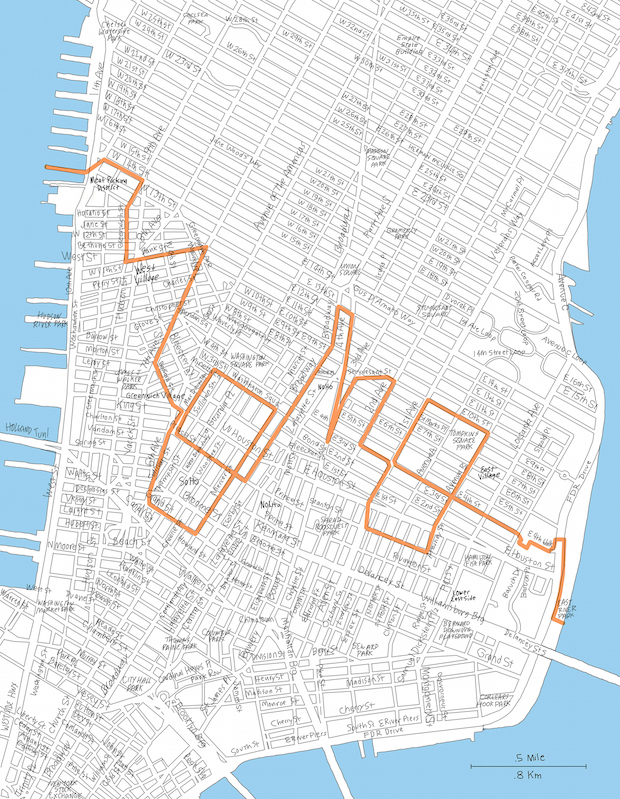
The brief was so open. Are there ideas or concerns that you've noticed popping up again and again?
RS: Yes, for example two painting by Aryz and Remed, while one is quite dark and one is quite beautiful, both relate the city to the body. Aryz, with his skeleton, uses the colour of the contemporary city, the drabness, the grey and its repetition. Remed was trying to produce a map, with straight lines and text but every time he came back to the painting, it kept getting more curvaceous and ended up being a body. He’s saying he’s sick of the straight lines of the city and craves the warmth and the curvature of the body. There are also a lot of psychogeographical works. 108 created two maps of Alessandria by day and by night to express how in twenty-four hours your way of looking at space can totally change. He's very influenced by cave paintings and rock and art. He lives near the oldest topographical map in the world, rendered in a cave painting.
Your first show at Somerset focused on the work of artist Sixe Paredes. Did you invite him back again for this group show?
RS: Yes, he’s created a map of Barcelona. It's using a style of his work he calls circuits. He's obsessed by numbers, numerology and the Kabbalah, and he has his own numeric system and cuneiform form of writing. All of the letters and numbers reference moments in his life or people that he's met. He shows these experiences and hides them at the same time. It has this reference to graffiti because you see the result but you miss often the performance. There's a constant juxtaposition between the hidden and visible and he's working with that same idea.
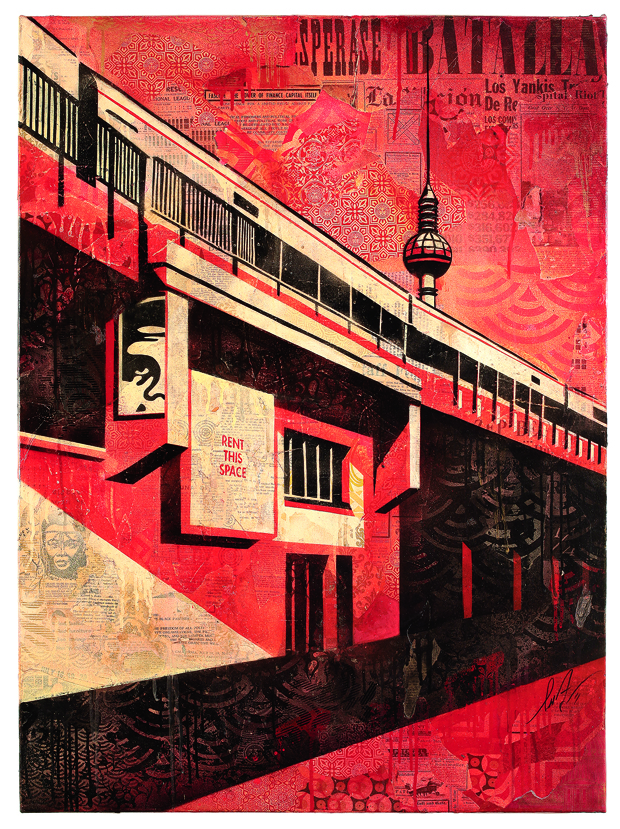
Do you have a favourite piece in the show?
RS: It’s probably one of the strangest works in the exhibition but also probably my favourite, It's by an artist called Ken Sortais from Paris. He's a famous graffiti artist, but now doing a lot more conceptual work so. Both of the pieces are casts done in situ. One is cast in latex from the ornamentation on the entrance to the Paris Metro, the other is a sphinx from Montmartre cemetery, on its side. This is a way of interpreting space which I love, it's something that you're not expecting. It’s almost baroque. It's fleshy, like skin.
Tell me more about Approved By Pablo.
It's myself and two partners Tim Roter and Raissa Botterman. I'm an anthropologist, and did my PhD on graffiti and street art. I spent two years in Madrid writing and travelling around the world with incredible artists, and when I came back I felt that the gallery scene was bereft of emotion and ‘eventfulness’. We aim to produce art as an event, so for this show there’s lectures, film, music events. We also want give power back to the artists so with our summer shows, it’s the artists that curate. For many street artists if they want a career in art they have to produce gallery shows where there isn’t opportunity for them to push themselves. We’re aiming to bridge the gap, producing museum-level work but giving the artists the opportunity to sell work, like a private gallery. Having the support of someone like Somerset House has been incredible. It’s been a real partnership.
Mapping the City
Somerset House, London
22 January–15 February 2015
a-by-p.com
somersethouse.org.uk

